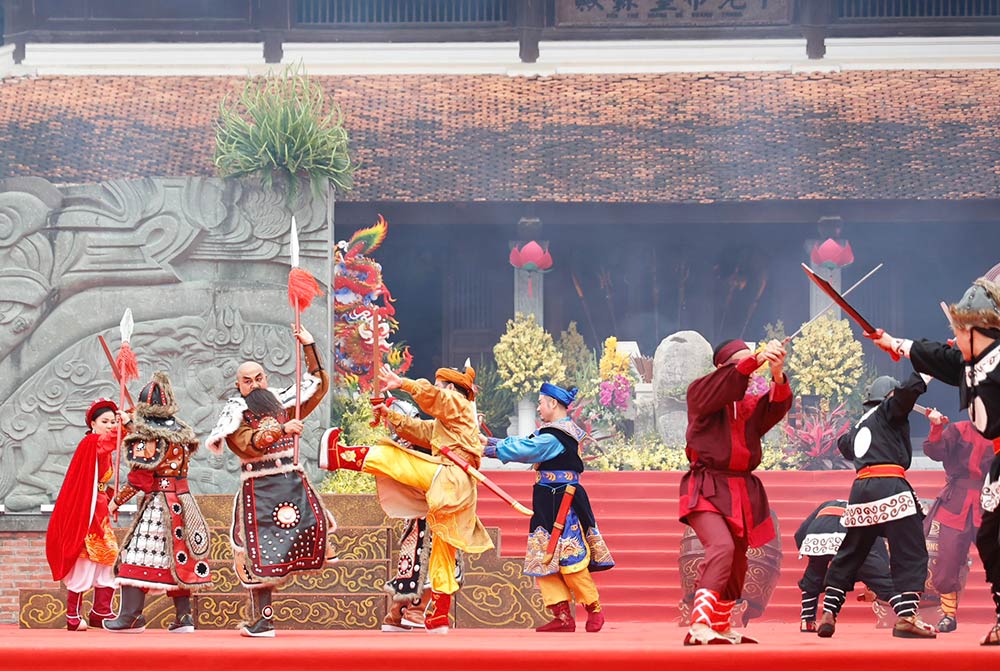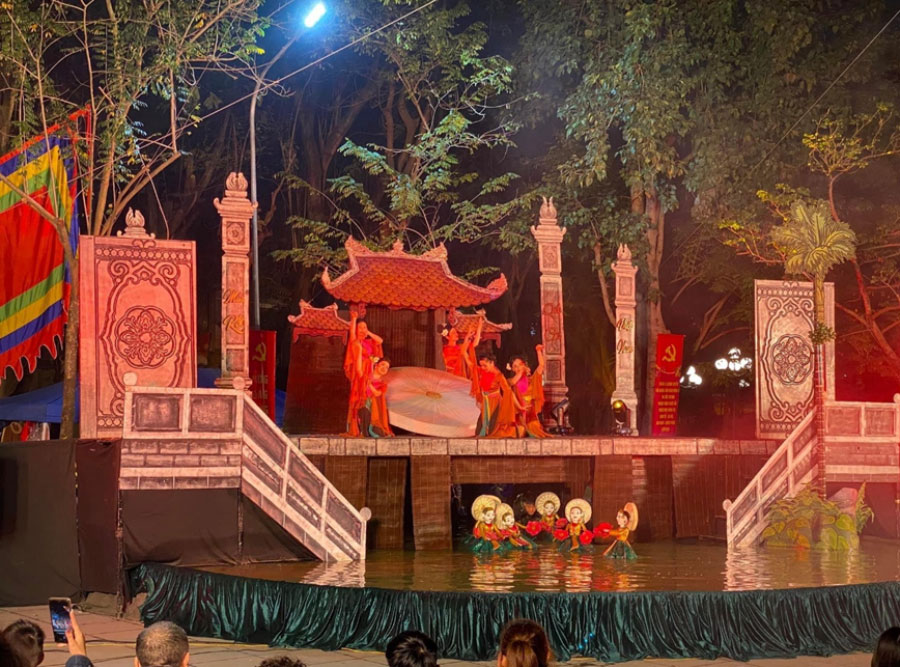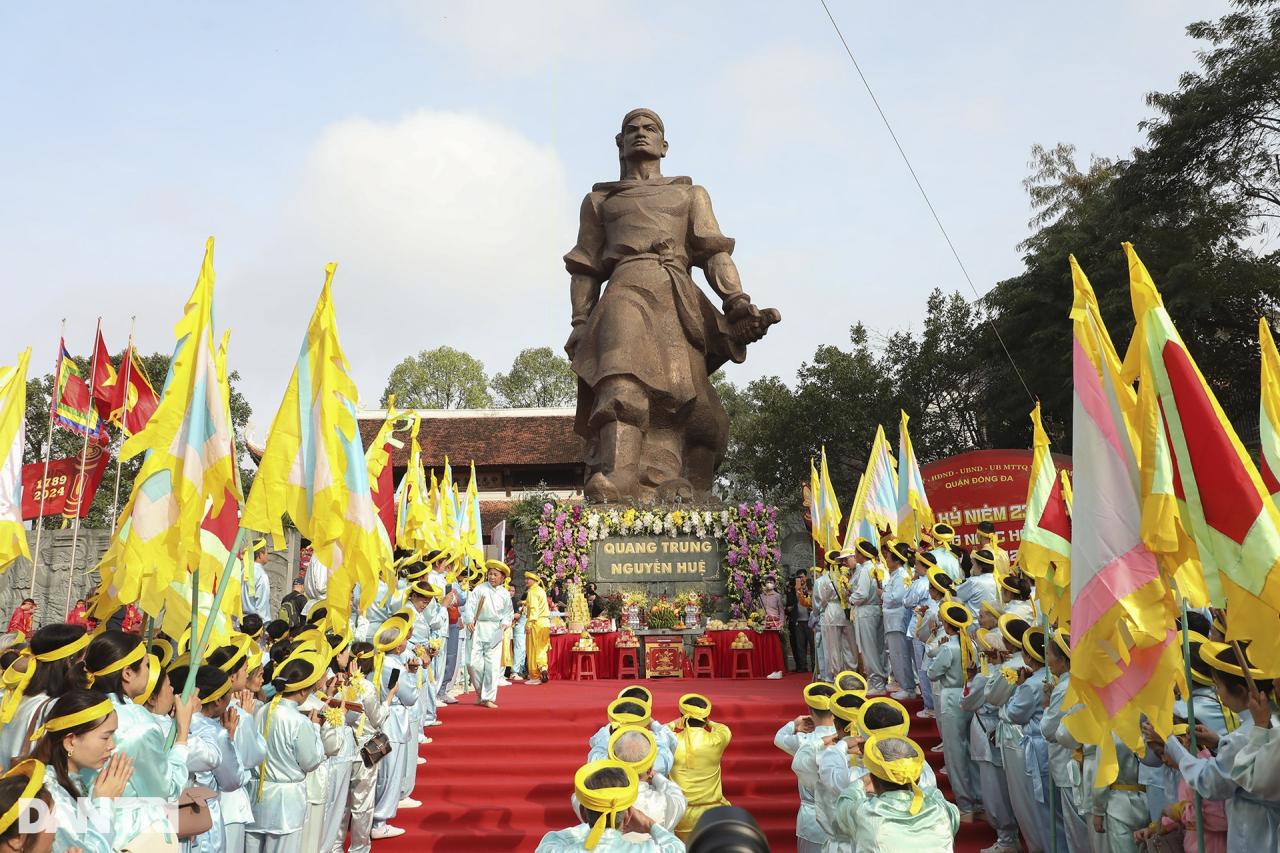Dong Da Mound Festival (also known as Dong Da Battle Anniversary) is held on the 5th day of Lunar New Year every year. It is a major festival in Hanoi, attended by many Party and State leaders, attracting a large number of people to pay tribute to and commemorate Emperor Quang Trung – Nguyen Hue – the brilliant military genius who led the Tay Son army to defeat 290,000 invading Manchu troops on the 5th day of Ky Dau (1789). This is a festival that recreates the heroic feat of the Tay Son army with magnificent martial arts performances, praising the patriotism, martial spirit and national pride of our people in the struggle and defense of the country.
Emperor Quang Trung – Nguyen Hue was born in 1753 in Tay Son hamlet, Kien My village, Binh Khe district, (now Tay Son district, Binh Dinh province). In the spring of 1771, the three brothers Nguyen Nhac, Nguyen Hue, Nguyen Lu raised the flag of uprising with the slogan “take from the rich to give to the poor” and denounced Truong Phuc Loan in a proclamation that was spread everywhere. The uprising was quickly responded to by the Kinh and Thuong people. From this uprising, Nguyen Hue became an outstanding leader of the 18th century peasant movement.
Nguyen Hue was a military genius who commanded the insurgents to defeat the Siamese invaders in the battle of Rach Gam – Xoai Mut in 1785. Four years later, in 1789, he commanded the defeat of 290,000 Qing troops in the battle of Dong Da at noon on the 5th day of the Ky Dau festival (1789), then with his generals and soldiers entered Thang Long citadel.
Not only was Quang Trung a military genius, he was also a wise politician. After the resistance war ended, he put forward many policies such as: leniency for the people, building and developing the national economy and culture. But unfortunately, when the country was on the verge of change, on September 16, 1792, he suddenly passed away, at the age of 39.
Every year, on the 5th day of the Lunar New Year, when the spring peach blossoms are still budding and blooming, Hanoians flock to the southwest of the city, to Dong Da Mound (in Dong Da district) to attend the festival. This is a festival to celebrate the glorious victory in the history of our nation’s resistance against foreign invaders led by Emperor Quang Trung – Nguyen Hue. To prepare for the festival, before the Lunar New Year, the festival organizing committee met, assigned tasks to each member, organized cleaning around the festival sites, covered and wiped the sacrificial objects, worship objects, hung festival flags, decorated banners, slogans, etc.
Previously, Dong Da festival took place simultaneously at many locations such as Khuong Thuong Communal House, Boc Pagoda, Dong Quang Pagoda, Dong Da Mound. From the afternoon of the 4th day of Tet, the Chief Priest and an Elder at Khuong Thuong Communal House prepared the worship items (Salmon, Parasol, Flag, Eight Treasures…) for the procession the next day. After that, the two of them went to Boc Pagoda to burn incense before the altar of King Quang Trung’s statue – the statue was preserved and protected by the people through many historical events.
Early in the morning of the 5th day of the Lunar New Year, the door of Khuong Thuong communal house opened wide, fragrant incense smoke spread, the highest flag in front of the communal house fluttered to welcome the great festival. The Five Elements flags were planted everywhere around the communal house yard. The faces of the people, the elders and dignitaries in the village had gathered in full force. The great ceremony began with the ceremony to worship the Gods. After completing the 6 rounds of wine offering, the procession to celebrate the victory of the Gods departed from Khuong Thuong communal house to Dong Da mound. The flags, banners, umbrellas, canopies, palanquins and the army were ready. The soldiers, the mandarins, each had their own duties, neatly dressed in festival costumes, waiting for orders. Starting with 3 beats of 9 resounding drums signaling the order to march, the procession set off. Leading the way was the Tiet Mao flag, representing the majesty of the gods. Following were the Five Elements flags, the Four Spirits flags. The flag bearers all wore Conical Hats, Colored Shirts, Red Bands, and Bo Que belts. Next were two young men carrying the Tinh Tuc and Hoi Ti signs to maintain security and order. After the Flag and Signs was the Big Drum carried by two people. The Drum and Gong signals beat the rhythm one by one. The Chap Kich followed closely behind, the Music Band joined in with the sounds of the Gong La, Ban Drum, and Senh Tien, which sounded very pleasant to the ears. Then came the Long Dinh Palanquin carried by four people, the scent of incense wafted in the air. On both sides of the Long Dinh were two Golden Parasols.
Following them were a line of elders and dignitaries walking slowly in their ceremonial robes as an escort force, creating a complete scene of historical significance and leaving a deep impression of respect in the attitude towards the national hero. Villagers of all ages, especially children, followed the procession throughout the journey, innocent and cheerful.
The procession was long, orderly, majestic, colorful, and the slow march had the grandeur of a victory celebration.
The most bustling was the procession that followed behind with the “Fire Dragon” made by the youth of Khuong Thuong and Dong Quang villages, made from straw, bamboo shoots and papier-mâché, and decorated with many colorful colors. They walked and danced to the rhythm of the Senh Tien. A group of young men in martial arts uniforms walked around the fire dragon, performing martial arts as if reenacting a past battle.
The procession recreates heroic images of the spring attack of the Tay Son army.
Meanwhile, at Dong Quang Pagoda, opposite Dong Da Mound, across Tay Son Street, incense smoke billowed along with the sound of wooden fish and prayers, praying for the souls of the fallen soldiers to soon return to their homeland. Here, a ceremony was also held to offer porridge to the wandering souls as a traditional act of humanity and morality of our people.
At Boc Pagoda, people also offered incense and flowers to commemorate King Quang Trung before his statue.
Today, the Dong Da Mound Festival is solemnly held at Dong Da Cultural Park for three days from the 5th to the 7th of the Lunar New Year. From early morning on the 5th day of the Lunar New Year, all the roads leading to Dong Da Mound were crowded with people.


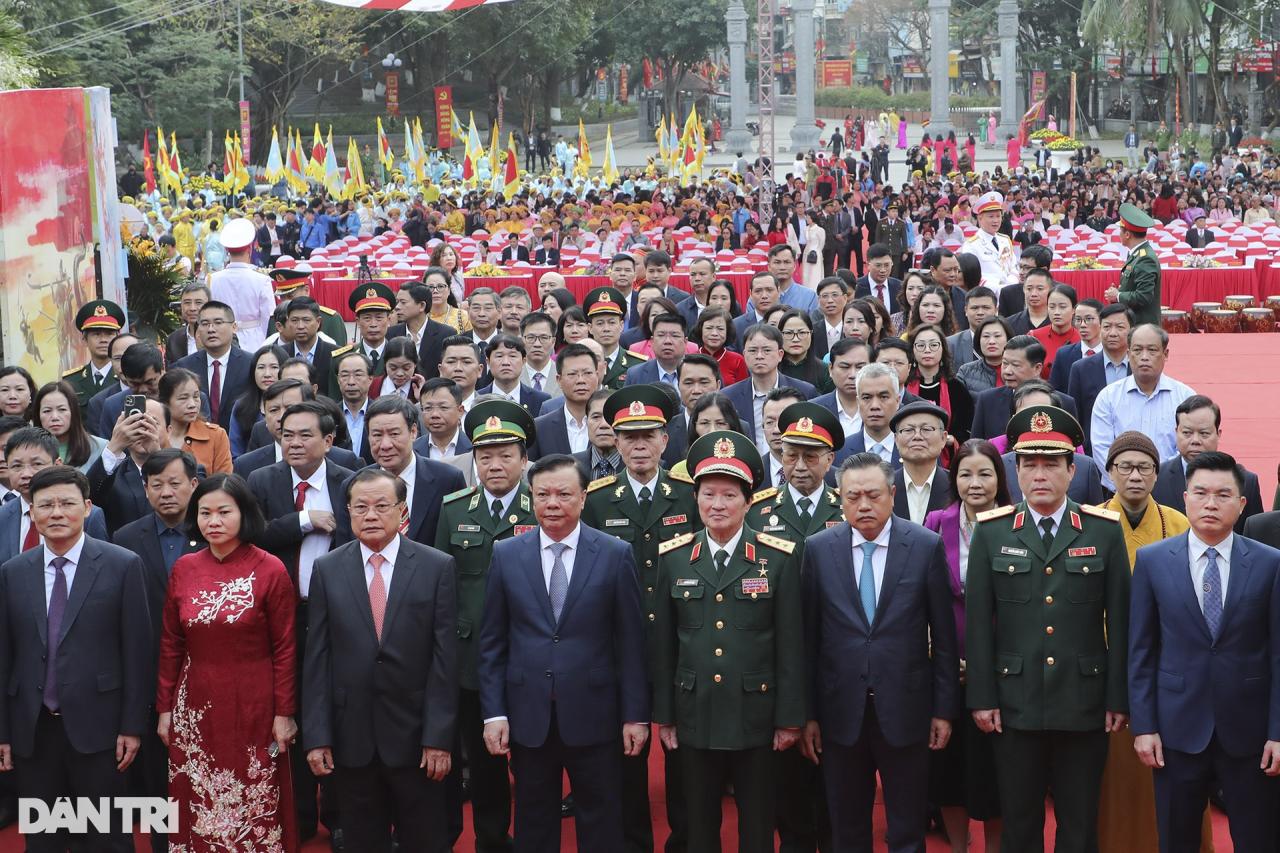



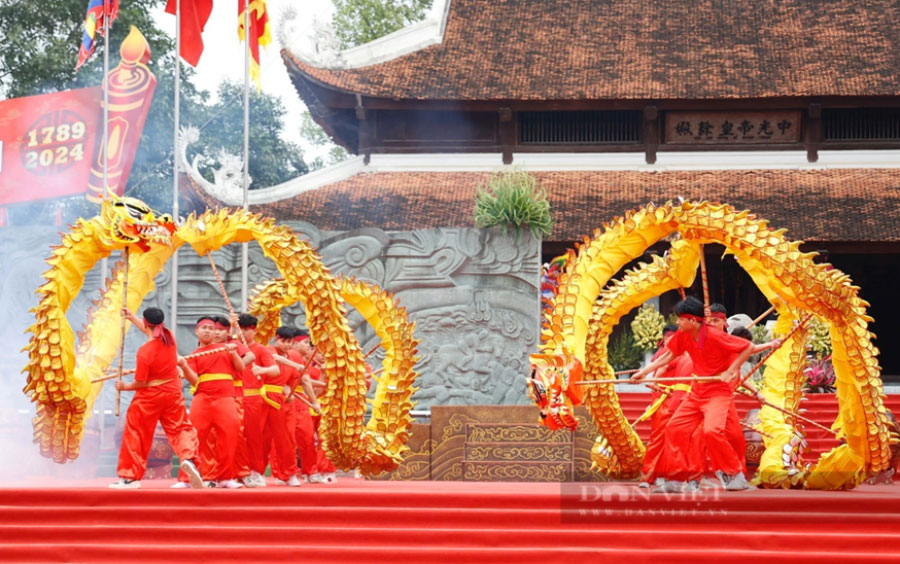
Coming to Dong Da Mound Festival, during the day and in the evenings of the 5th, 6th and 7th days of the first lunar month, people can also enjoy traditional art programs imbued with national cultural identity: Tuong, Cheo, Cai Luong, Water puppetry, ect.
Within the framework of Dong Da Mound festival, there will be spring fair booths: books, souvenirs, calligraphy, folk games: human chess, Chinese chess, martial arts, ect. and other Activities for children such as making “To he”, playing ball, ect.
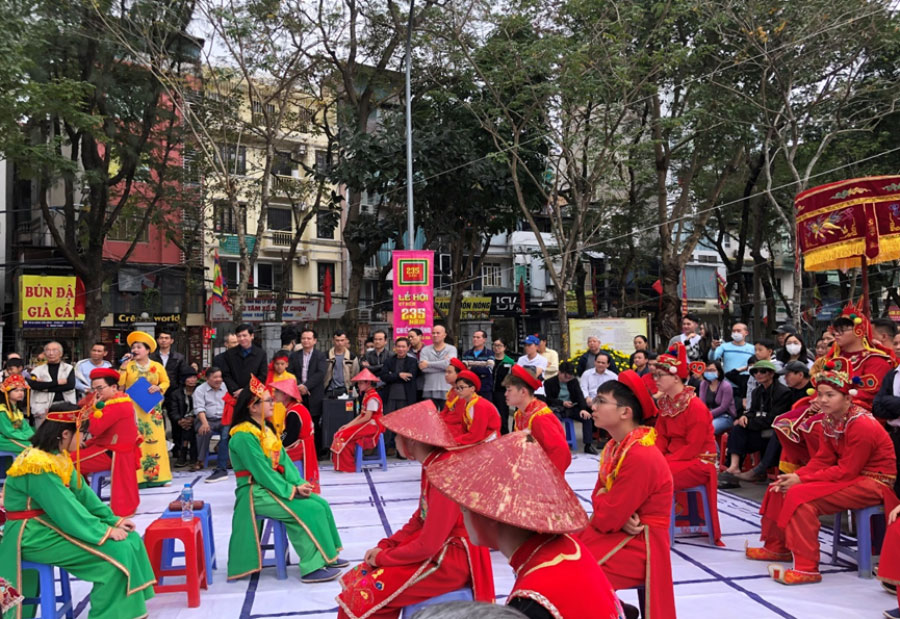
During the festival, Emperor Quang Trung Temple and Quang Trung Exhibition House – Ngoc Hoi – Dong Da Victory are also open to serve people and tourists from all over to worship, visit and learn.
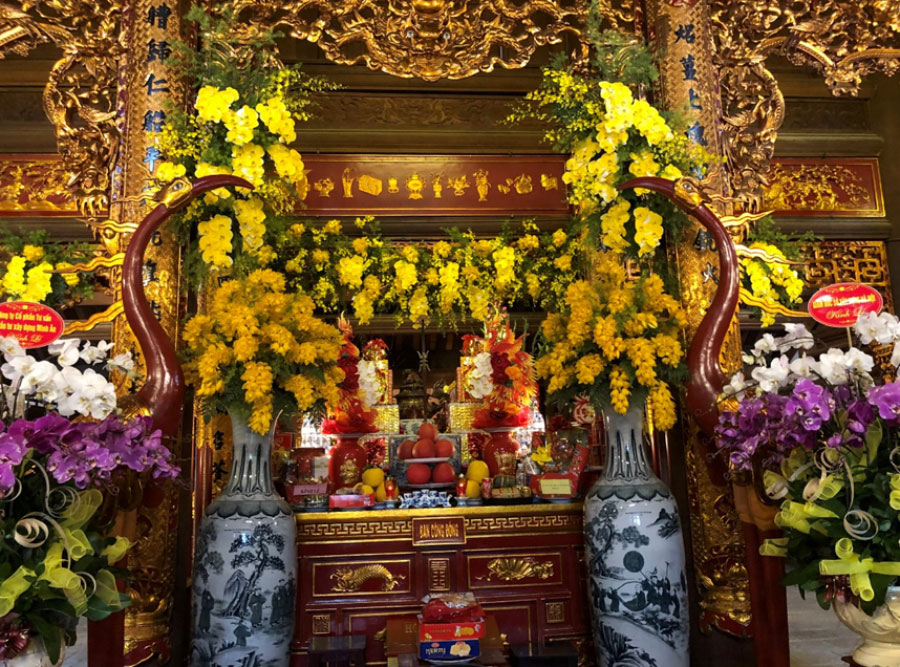

Held on three days, the 5th, 6th and 7th of the first lunar month, the annual Dong Da Mound Festival is one of the unique Spring festivals and a cultural and spiritual tourism destination that attracts tens of thousands of visitors.
During the days of the Festival, the Organizing Committee welcomed leaders of the Party and State, leaders of departments and branches from the Central Government, Hanoi City, other provinces and cities and thousands of domestic and foreign visitors who come to offer incense to pay tribute to Emperor Quang Trung, visit and enjoy the Festival’s activities.
Nowadays, attending Dong Da festival for Hanoians has become an indispensable need in the first days of spring. The festival is an occasion for joyful and healthy cultural activities, a meeting place and exchange place for all classes of people in the capital to educate today’s young generation to always remember the merits of the hero Quang Trung – Nguyen Hue as well as his contributions to the history of the country and the history of Thang Long – Hanoi. Dong Da Mound Festival is also an opportunity for people and tourists to review the glorious history of the nation, evoking the spirit of patriotism, solidarity and national pride in every Vietnamese person.
If you are looking for a place to have fun at the beginning of the Lunar New Year in Dong Da, Hanoi, you can arrange your schedule to attend the Dong Da Mound Festival, you will have the opportunity to immerse yourself in the bustling atmosphere of this unique festival.



 Tiếng Việt
Tiếng Việt